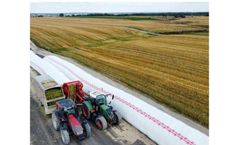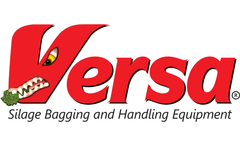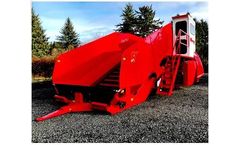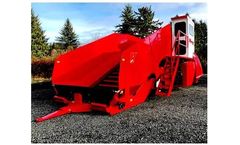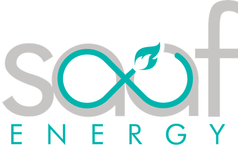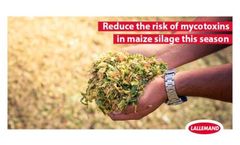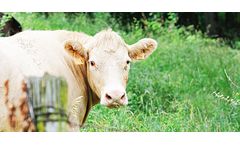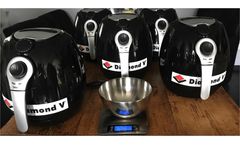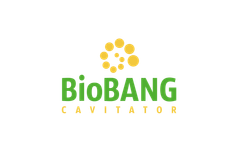Refine by
Maize Silage Articles & Analysis
48 articles found
Utilizing modern bagging can provide superior silage quality and nutritional value compared to common, old-fashioned storage methods Canadian dairy farms face several silage-related challenges that are uniquely shaped by national climate, regulatory, and logistical factors not commonly seen in the United States. In much of Canada, the growing season is significantly shorter than in many ...
Improved feed management involves a lot more than how to store it. Expanding your thinking can save tens of thousands of dollars each year while enhancing nutrition, herd health, and milk production. Feed costs are the largest expense for dairy farms, typically making up 50% or more of the total operating costs. Bagging silage has proven to be an efficient way to reduce feed waste. But, when we ...
As a cost saving alternative to dry grain supplementation, bagged snaplage/earlage offers high energy content and easy digestibility Dietary supplementation with dry grains has traditionally been utilized as an economical way to meet the high energy demands of the herd, particularly when forage is scarce or of low quality. However, dairy farmers are increasingly turning to high moisture corn ...
Dairy farmers are bagging silage to reduce spoilage by up to 30%, increase nutrient value and milk production, improve herd health, and potentially earn environmental carbon credits. For dairy farmers, “good feed promotes good production” is a guiding principle that has a direct cause-and-effect impact on milk tank volume. As a result, providing the highest quality feed is crucial ...
Cattlemen are increasingly turning to bagged silage for flexible feed management. The most fundamental beef cow feeding strategy remains the use of pasture, which is considered the lowest-cost feed resource. Therefore, many cattle operations aim to maximize pasture time annually to benefit from labor, manure management, physical activity, and nutrition advantages. ...
Dairy farm consultants and equipment suppliers weigh in on the benefits of properly packed bags, as well as feed management tips to obtain the highest nutrient density feed to promote herd health and production. Silage is critical to dairy farm operations. Compared to hay production, silage increases the potential yield of nutrients from available land, decreases feed costs, lowers harvest ...
Lunen Location: Lunen, Germany Output: 2.4MW Electricity Input Materials: Maize Silage, cow and pig slurry. ...
“Maize can be more difficult to compact, meaning there’s more potential for residual oxygen in the clamp. When the clamp is opened, oxygen will penetrate faster, re-activating the yeasts and leading to aerobic spoilage and wasted silage,” says Mrs Colahan. “New metagenomic trial data which looked at bacterial levels in ...
Magnesium (Mg) is an essential mineral for dairy cattle. Many forages are deficient and excessive amounts of other minerals, especially potassium (K), can interfere with Mg utilization, resulting in a greater Mg deficiency. While grains and oilseeds contain more Mg than most forages, the total ration still can be deficient. Most dairy nutritionists recommend 0.35% Mg in the total ration. ...
Measuring Dry Matter Accurately On-Farm With an Affordable Consumer Appliance When assessing the health and productivity of your dairy herd, dry matter intake (DMI) is one of the key data points to consider. If DMI is low, productivity suffers no matter the quality of the ration. Moreover, with low DMI, maintaining cow health becomes that much more ...
Plant’s power: 500 kW/h Daily feeding: pig slurry; corn silage; rye meal Goal: Reduce the product’s viscosity into digesters to increase the concentration of Dry Matter To see video, please click ...
Plant’s power: 1000 kW/h Daily feeding: 16 t corn silage; 20 t cattle manure with straw; 20 t triticale Goal: optimize the cost of the daily feeding by replacing the corn silage with cheaper biomasses. To see video, please click here Read more ...
Plant’s power: 500 kW/h Daily Feeding: Grass silage, Maize silage, Chicken manure, Maize meal feed, Cow slurry Goal: Increase the digestibility of grass silage, reduce the amount of silage and corn flour and improve the viscosity in digesters To see video, please click ...
Plant’s power: 1000 kW/h Daily Feeding: grass silage, wholecrop cereals, wholecrop maize, chicken litter Goal: we would consider broadening the scope of feedstocks (farm crops and manures) as and when they become available so the system will need a certain amount of flexibility To see video, please click ...
Plant’s power: 1000 kW/h Daily feeding: corn silage, horse manure, grass Silage Goal: Optimize the cost of the daily feeding, reducing the quantity of corn silage and increasing the amount of grass silage and horse manure To see video, please click ...
Plant’s power: 1400 kW/h Daily Feeding: Barley silage; sugar beet pulp; grain; corn silage; potatoes peelings; mustard skin Goal: Reduce the viscosity to increase the concentration of Dry Matter from 12% to 17% and thus increase the production of gas, keeping the same digester’s volumes Read more To see video, please click ...
Plant’s power: 1200 kW/h Daily Feeding: 26 t corn silage, 10 t chicken dung, 2 t rye flour Goal: Shredding the content in the fermenter to decrease the viscosity To see video, please click ...
Plant’s power: 750 kW/h Daily feeding: Corn silage, Flours, Chicken Manure, Cattle Slurry Goal: Increase the gas production, Eliminate flours, reduce the quantity of corn silage and increase the Chicken manure quantity. To see video, please click ...
Plant’s power: 1800 kW/h Daily feeding: Corn Silage, Pig manure with straw, Straw Goal: to reduce the viscosity in digesters and increase the yield of gas from the straw. To see video, please click here Read more ...
Plant’s power: 800 kW/h Daily feeding: corn silage, clover, cattle manure with straw Goal: to reduce the viscosity into digesters and to reduce the corn silage percentage To see video, please click ...


